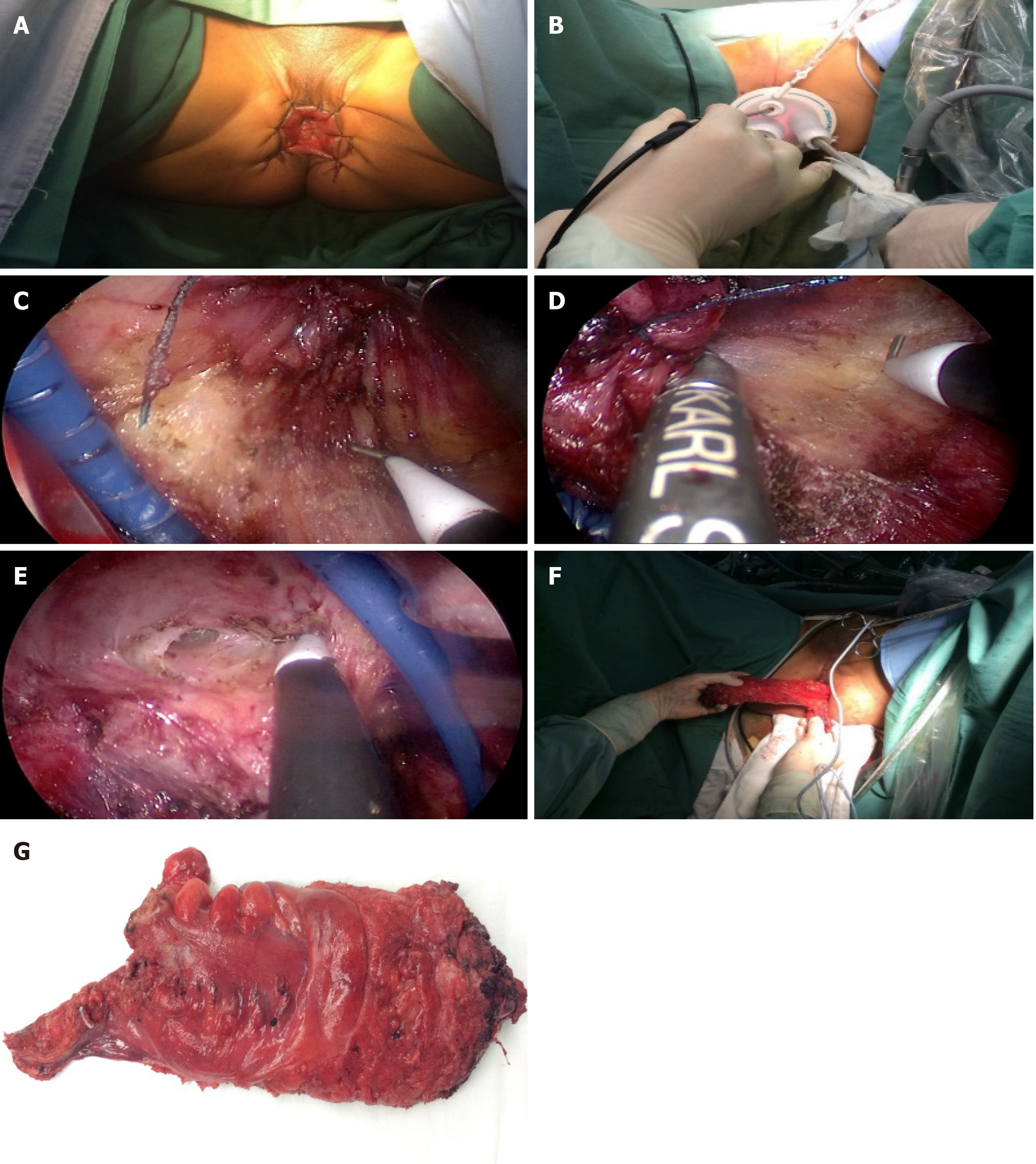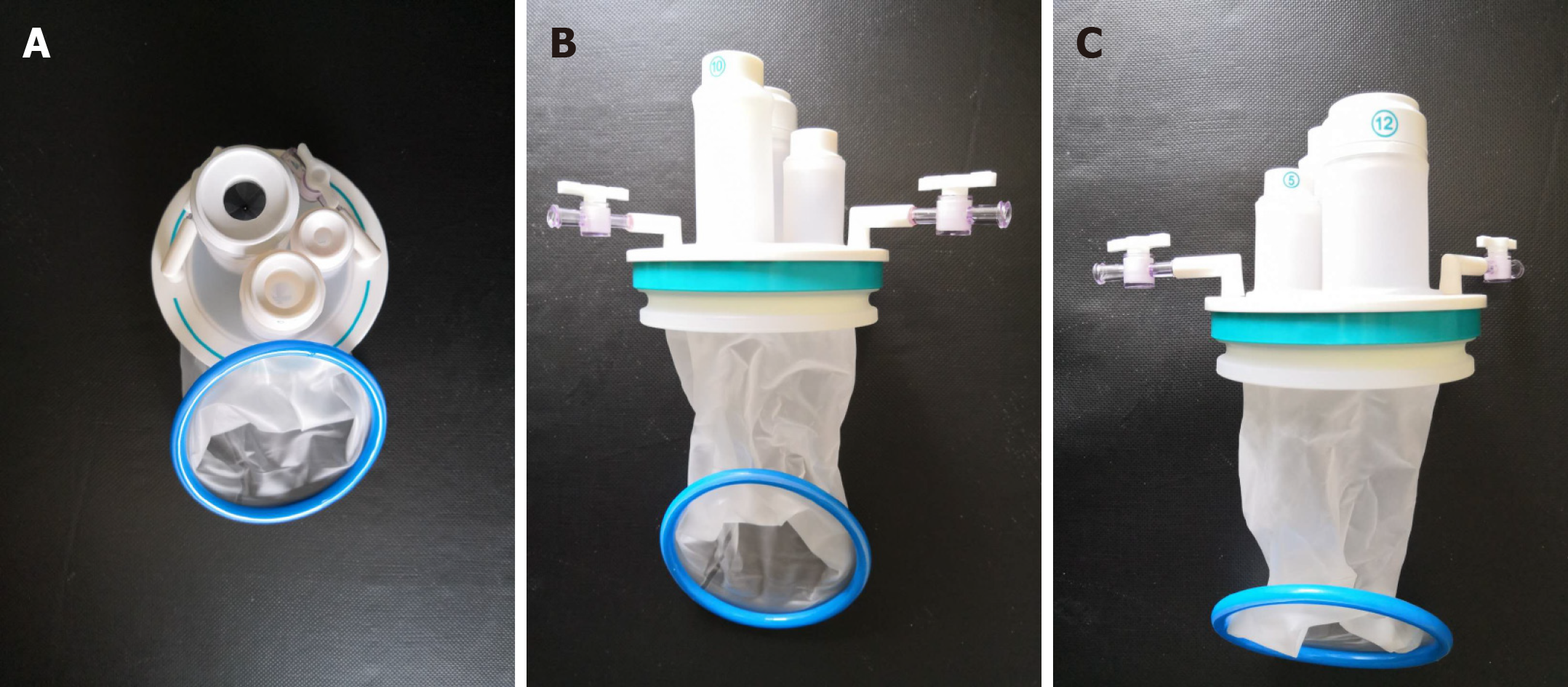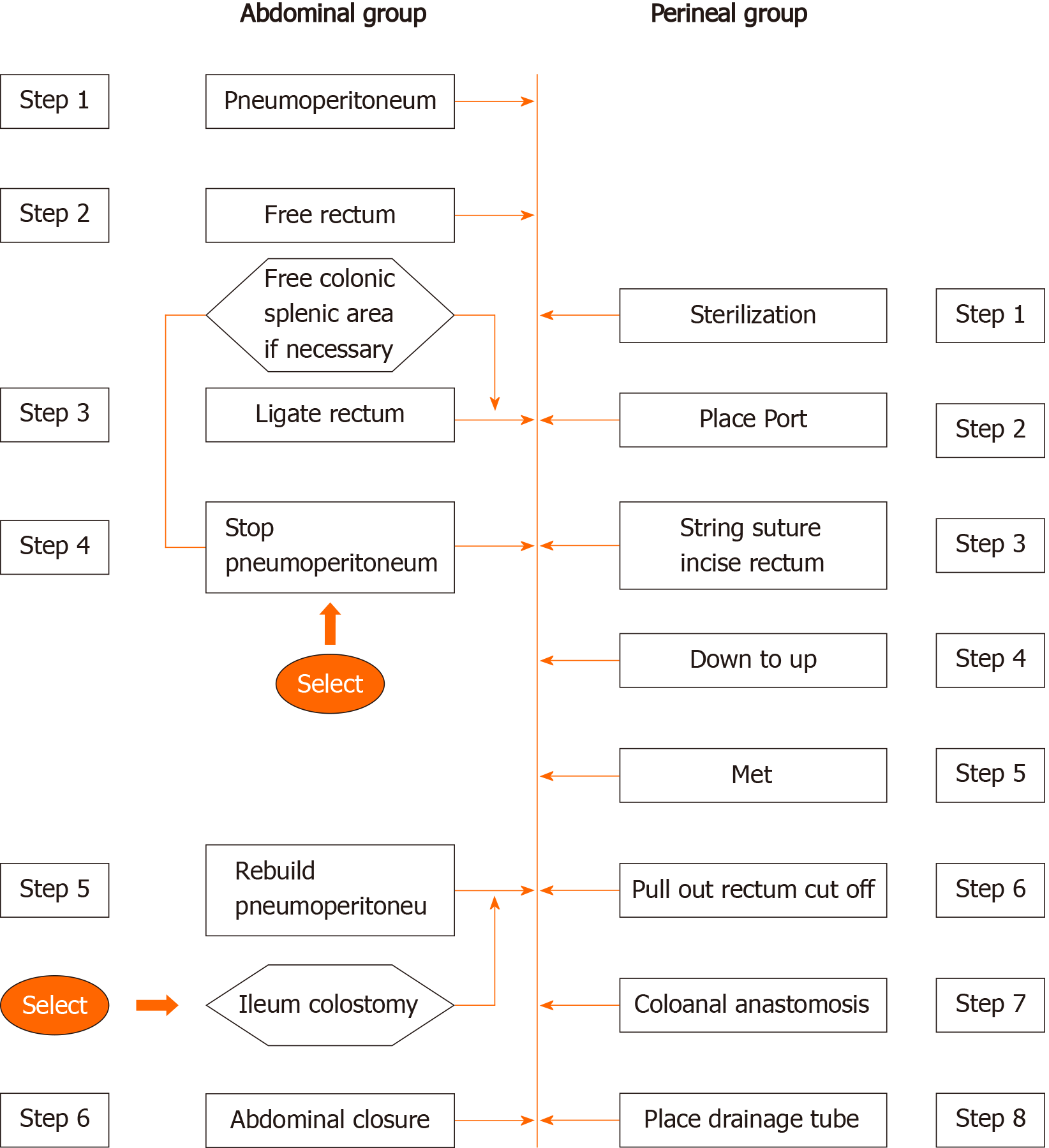Copyright
©The Author(s) 2021.
World J Gastrointest Oncol. Jan 15, 2021; 13(1): 12-23
Published online Jan 15, 2021. doi: 10.4251/wjgo.v13.i1.12
Published online Jan 15, 2021. doi: 10.4251/wjgo.v13.i1.12
Figure 1 Transanal total mesorectal excision surgical procedure presentation.
A: Anal exposure (anal and perianal skin suture); B: Place the operation platform (Star port); C: Left lateral dissection; D: Right lateral dissection; E: Anterior dissection; F: Specimen extraction.
Figure 2 Photos of the transanal STARPORT used in transanal total mesorectal excision surgery.
The transanal STARPORT consists of an air-tight cover and an anal dilator. A: Positive view; B: Back view; C: Side view.
Figure 3 One case of a 30-year-old male patient.
A: Magnetic resonance image before neoadjuvant therapy; B: Magnetic resonance image after neoadjuvant therapy; C: Front view of specimen; D: Back view of specimen; E: Specimen; F: Abdominal appearance; G: Anal pressure measurement and pressure variation diagram (constriction pressure [121.0 ± 11.6 mmHg], defecation pressure, resting pressure [41.5 ± 8.6 mmHg]).
Figure 4 The laparoscopy-assisted transanal total mesorectal excision was divided into the transabdominal and transanal parts.
This operation can make full use of the advantages of transabdominal and transanal surgery. Laparoscopic surgery can complete laparoscopic exploration, vascular ligation and lymph node dissection, middle and upper mesentery dissociation, while transanal surgery can complete the lower mesentery migration and specimen removal, and then complete abdominal and transanal anastomosis reconstruction.
- Citation: Li YJ, Wang L, Sun TT, Wu AW. Laparoscopy-assisted transanal total mesorectal excision for lower rectal cancer: A feasible and innovative technique. World J Gastrointest Oncol 2021; 13(1): 12-23
- URL: https://www.wjgnet.com/1948-5204/full/v13/i1/12.htm
- DOI: https://dx.doi.org/10.4251/wjgo.v13.i1.12












